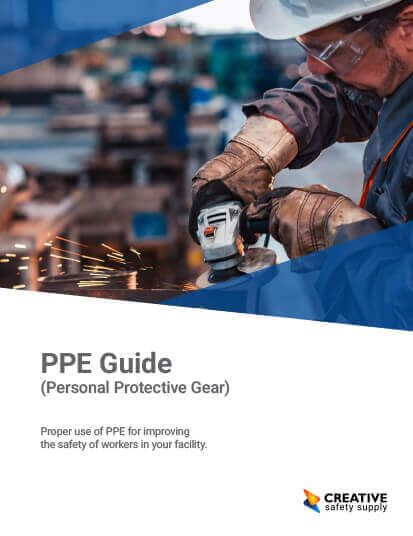
To reduce the transmission of respiratory illnesses in your workplace, it’s important to conduct a hazard assessment and follow the hierarchy of controls, a framework that helps to determine options for controlling workplace hazards. In this case, the hazard is an illness such as COVID-19, which is easily spread from person to person. OSHA has developed guidance for businesses and employers to respond to exposure to respiratory illness in the workplace. Their recommendations for infection prevention follow the hierarchy of controls.
The best way to control a hazard is to remove it from the workplace. In the event it’s not possible to fully eliminate the hazard, one of the most effective protective measures is to implement administrative controls. These are controls that rely on action by employers and workers to help reduce the transmission of illness. Which administrative controls you implement will depend on the level of risk of exposure to COVID-19 in your facility.
Administrative Controls for Jobs Classified at Lower Exposure Risk
The majority of workers will fall under this lower risk of exposure to illness. In this case, employers must:
- Monitor public health recommendations by checking the CDC’s website on COVID-19, and ensure that workers have access to this information
- Collaborate with employees to create an effective means of communicating important information on the transmission of illness
Administrative Controls for Jobs Classified at Medium Exposure Risk
Jobs at medium risk are ones that require frequent close contact with people who could potentially be infected but are not known or confirmed to have an illness. This includes workers at airports and other types of international travel, high volume retail settings, and schools. In this case, employers must:
- Consider offering face masks to contain respiratory secretions
- Post signs about COVID-19 in stores in order to keep customers informed about illness symptoms, and ask sick customers to minimize their contact with workers
- Consider implementing strategies that minimize face-to-face contact such as creating drive-through services, phone-based communications, or asking people to work from home
Administrative Controls for Jobs Classified at High or Very High Exposure Risk
Jobs at the highest risk of exposure include ones in healthcare facilities, morgues, and medical transportation (ambulance drivers and other first responders). In this case, employers must:
- Follow existing guidelines and standards of practice for identifying infected individuals, and isolating them to protect workers
- Post signs asking patients and visitors to report symptoms of respiratory illness as soon as they arrive
- Consider enhanced medical monitoring of workers
- Provide workers with training and education that is job-specific on preventing the transmission of illness
In most cases, a combination of personal protective equipment (PPE) and hazard controls are effective in reducing the transmission of respiratory illness in the workplace.
Similar Questions
- Do employees need to wear face coverings or PPE to protect themselves during COVID-19?
- What is the main workplace safety guidance employers should follow for COVID-19?
- How should workplaces implement exposure controls?
- Do employers have a duty to prevent worker exposure to COVID-19 infection?
- How can social distancing be practiced in the workplace?
- What OSHA standards apply to reopening facilities?
- How can a healthy work environment be maintained?
- How can healthy business operations be maintained?
- Do workplaces need an exposure control plan specific to COVID-19?

